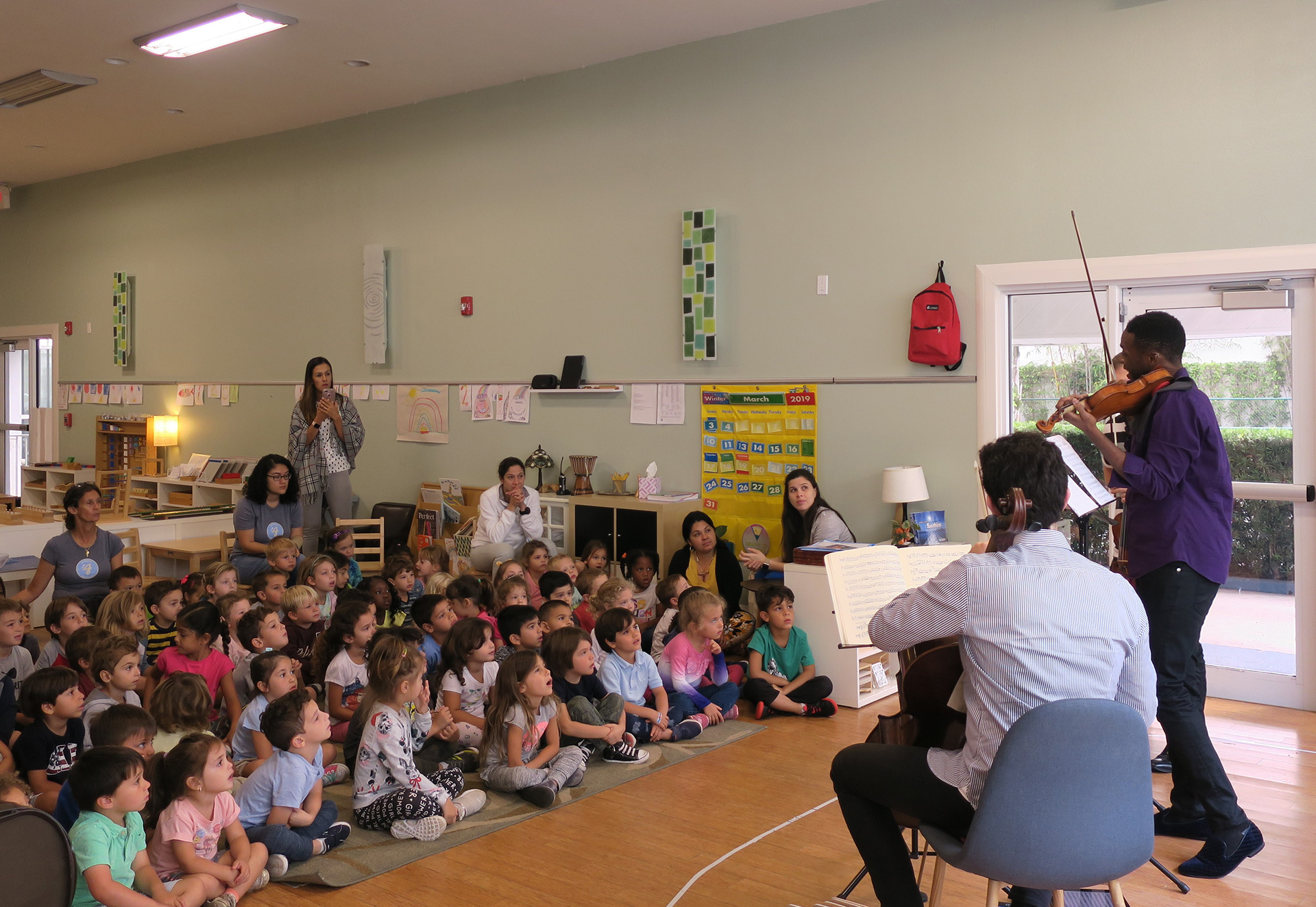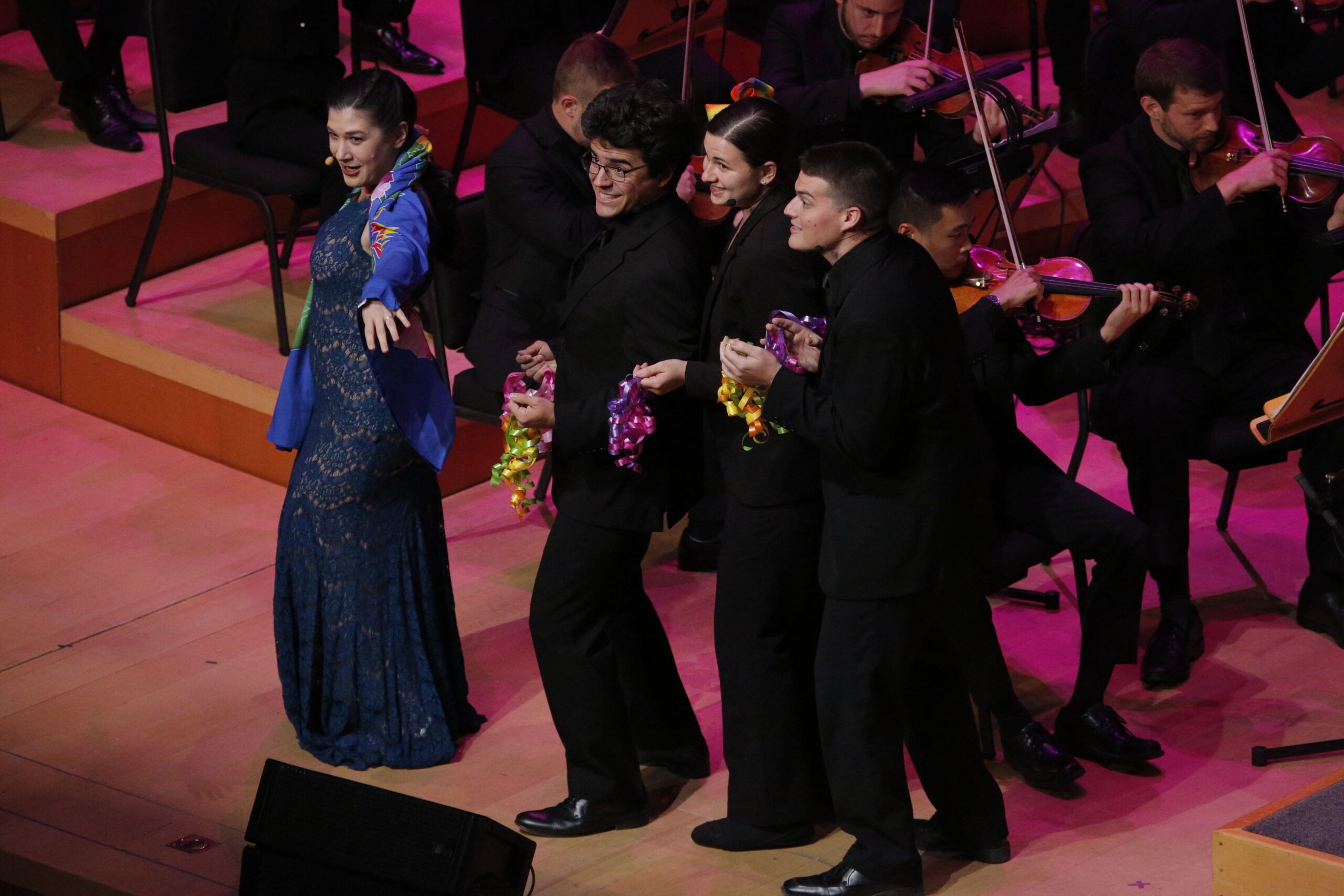Create Your Own Adventure

Goals
Audience will be able to relate elements of storytelling to a performance of a piece of music.
Overview
It’s time for storytelling! Create Your Own Adventure through audience question and answer. Play segments and ask what the audience thinks the music depicts, or have a story prewritten to accompany the music and share it with the audience.
Process
- Identify segments of music that evoke strong images of mood, action, character, etc. Or, break down your piece into clear sections, with distinct mood, tempo, etc., changes.
- During the performance, tell your audience they will be coming up with a story to accompany the piece you are playing. Ask them to look for characters, action, mood changes, and imagine what might be happening in each scene.
- You may set the scene before you start the first segment if you wish. Play the first segment. Ask the audience what they heard, and what they think was happening in that scene. You may have one performer writing your story on a board. For educational concerts, especially if you have an audience knowledgeable about music, you may also ask them to relate elements of music (tempo, range, articulation, dynamics) to why they think it sounds that way. Alternatively, you can have a choice of 3-4 different options of action that may have occurred for the audience to vote on which they think fits the music best.
- Continue this process until you have played all the segments of music, and have a fully formed story. You may wish to suggest the ending of the story yourself to ensure a conclusion, or supplement the audience response with a conclusion if their response does not include one (or it’s not appropriate).
- Optional: You may perform the piece again in its entirety, allowing the audience to follow along with the complete story.
Audience Type

What does this activity look like in action?
Example Script:
Piece: Strauss – Till Eulenspiegel’s Merry Pranks
Performer: The next piece we’re going to play follows a character through their many adventures. We think this character gets up to a lot of mischief, and we’re hoping you can help us figure out what they’re doing throughout this piece.
First let’s introduce this character. [Orchestra plays through opening horn solo].
Would anyone like to tell me what they think this character might look like? [Listen to a few audience responses, form a composite character, (or just one response, or a vote on your options) and write it on the board].
Okay let’s get this story rolling. Listen to the next segment and see what you think our character gets up to first. [Play next section].
Does anyone have any ideas about our character’s first activities? [Collect audience responses, validate them, write down the consensus/your summary/voting result, or just collect one response].
Moving on! Let’s listen for what they do next. [Play next section].
[Collect responses, write out next section of the story]
[Continue this process of playing and getting responses until you reach the last segment].
Okay, now for the big finale! What do you think happens to our hero at the end of the piece? [Play ending, collect responses].
Awesome, now we have a full story of our hero’s adventures. Thank you so much for helping us figure that out! Let’s recap: [repeat story, perhaps with small examples accompanying your speaking]. How about we listen one more time to our story play out?
[Play piece in entirety].

Modifications
- Interactivity Level 1 if telling the audience a story. See “Storytelling activity”.
- Interactivity Level 2 if requesting the audience to think up a story. (See example above).
- For a quicker process, have pre-written sentences for the next action in the story for the audience to vote on by raising their hands.
- Interactivity Level 3 if creating music based on an audience-created story. See “Audience Composition Activity”. In this scenario, it is helpful to have pre-selected segments ready to choose from and play based on audience response. It can essentially be flipping the order from Interactivity Level 2. For example, you could break a piece down into shorter phrases or sections, and rearrange them based on the audience-created story. Have the audience suggest “what happens next” to build on a starter scene, and then choose a section that might go well with it and perform that section. Next, repeat until you only have one section left, and suggest your own ending for the story that might match the movement in the music.
- Combine with “Audience Composition Activity“. Instead of painting a scene and identifying scene elements, build a story with the audience and improvise a piece that follows the story, and/or combine pre-rehearsed music cells to follow the story.
Notes
- Can also include a narrator to speak the story along to the music.
- This activity follows “Compositional Tools” well, as the audience will have a toolbox of musical terms to accompany and justify their answers.
- This activity can also happen over the course of an entire concert, rather than one piece of music. This would mean having a program of music that might tell a story over an hour, and would require thought about how to steer the audience, or just tell the story yourself.
Materials:
- Whiteboard/chalkboard/easel paper and marker to write out the story.
Create interactive performances. We have activities to help you connect with your audiences.


